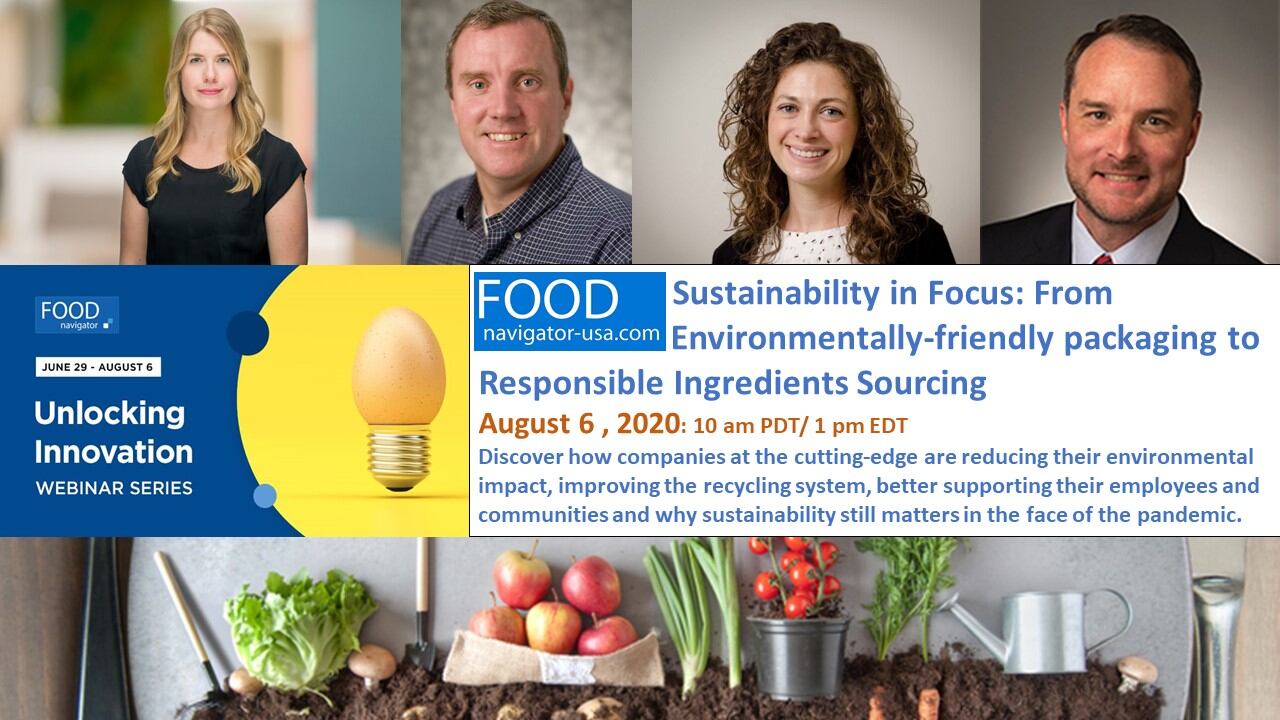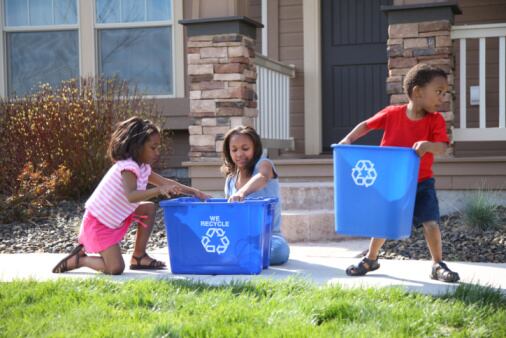More than 450 packaged goods companies, raw material producers, governments and non-governmental organizations have joined the New Plastics Economy Global Commitment with a shared goal of making 100% of plastic packaging reusable, recyclable or compostable by 2025.
As it stands, however, the US recycling system cannot deliver the supply of recycled materials demanded by the Global Commitment – forcing stakeholders across the value chain from CPG companies to local governments to work together to address roadblocks to collection and processing of packaging at the end of their life, Dylan de Thomas of The Recycling Partnership told attendees at IFT’s virtual trade show and expo earlier this summer.
“A lot of these large companies have … these massive goals to be able to collect a lot of the materials that they are putting out in the marketplace to be able to get them back into the system. But what we’ve found with our analysis of the signatories to the Global Commitment is that there’s going to be … a gap” between what they need and what is available, he said.
For example, there will be a 1 billion pound gap of available PET to meet projected demand for recycled PET bottles, he said.
This shortfall is due in large part to America’s fractured recycling system, which is not managed at a national level but rather at the local level, he said. This means that only about half of communities offer recycling services that are easy to use as trash collection, while others have to drive their recycling to drop off centers, pay to have it hauled away or have no access.
Roughly 70 million people have curbside service in the US for single family homes, representing about 19.3 million tons of available recyclable material. But, of those only 61.5% participate, which means of the 19.3 million tons of potentially recyclable materials generated by single family homes is collected – which isn’t enough to meet consumer demand for greener packaging.
To help capture more recyclable material and ultimately meet company packaging goals, de Thomas said The Recycling Partnership announced late last fall that it will launch an industry-wide $250 million residential recycling intervention over five years to capture more than 340 million pounds of post-consumer plastics and more than 2 billion pounds of other packaging materials. In addition to revamping the recycling system, the organization’s Bridge to Circularity: Unlocking Supply initiative also will pursue policy changes, build a more robust data system and enhance consumer participation.
[Editor’s Note: Interested in learning more about how cutting-edge food and beverage companies are improving their sustainability? Join FoodNavigtor-USA Aug. 6 at 12 CT for a FREE webinar on Sustainability in Focus: From Environmentally-friendly Packaging to Responsible Ingredients Sourcing. Register HERE.]
Price disparity hampers use of post-consumer material
Supply shortages and increased competition for post-consumer materials isn’t the only deterrent for more companies to create ‘greener’ packaging – the cost difference between virgin resin and recycled options also discourages some companies, said Emily Tipalado, director of strategy and business development at More Recycling.
“One of the things that is really hampering our ability right now with plastics to move toward greater use of recycled content is a great price disparity between virgin resin or virgin plastic and recycled plastics,” she told IFT attendees, noting that the pellet price to source virgin high density polyethylene, or number 2 plastics, is about a third to a half less expensive than sourcing varying grades or different types of recycled resin.
The price difference comes down to the additional steps to process the plastics to a point where they are appropriate for feedstock needs to be reused, which virgin resign doesn’t have.
“This price disparity also plays into another issue – our capacity as a country to be able to process all of the materials that we are producing,” Tipalado added, noting that the US currently can process about only 5% of the materials being produced by the top 10 resin producers.
“So, we have a lot of room to move up to be able to handle the material and meet some of those supply challenges … in terms of getting enough material at the quality that is needed at the right price in order to meet all those corporate commitments,” she said.
Open access tools and legislation offer push-pull solutions
To help address this and other challenges hindering recycling and the creation of greener packaging, Tipalado said More Recycling is creating a Recycling Market Development Platform designed to be an open source place for tools to drive action in a circular economy.
The goal is to create a one stop shop for information about any type of material, not just plastic, for anyone in the value chain – whether that is as a participant in the circular economy, a designer for recycling, someone looking for source material to use more recycled content or those in need of certification information, she said.
Beyond this, Tipalado said communities need to explore legislative pressure, and inextricable links between recycling and economic drivers.
“It can be tough in the atmosphere like within the US to be a first mover on something or to make a big investment when there isn’t legislative pressure because then you may put yourself or your company at a disadvantage in comparison to competitors,” she explained, adding that in Europe where there is legislation around recycling the purchasing of recycled content and vertical integration of recycled product is higher.
[Editor’s Note: Join FoodNavigtor-USA Aug. 6 at 12 CT for a FREE webinar on Sustainability in Focus: From Environmentally-friendly Packaging to Responsible Ingredients Sourcing. Register HERE.]


